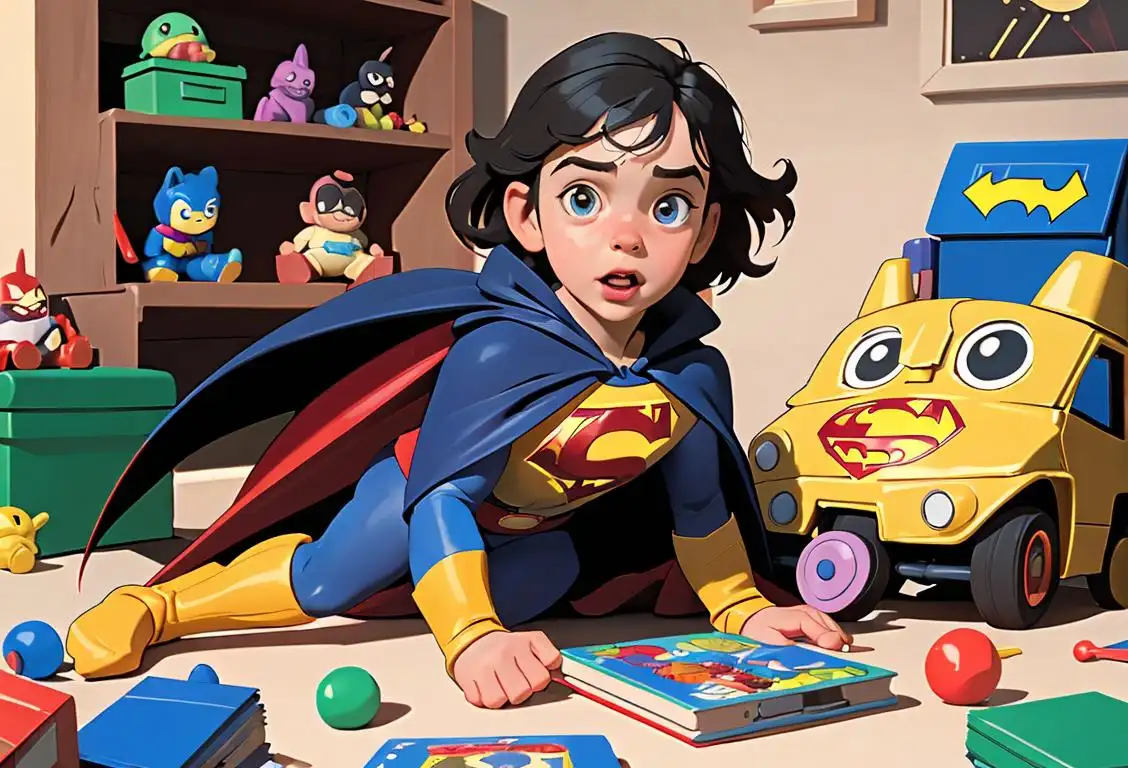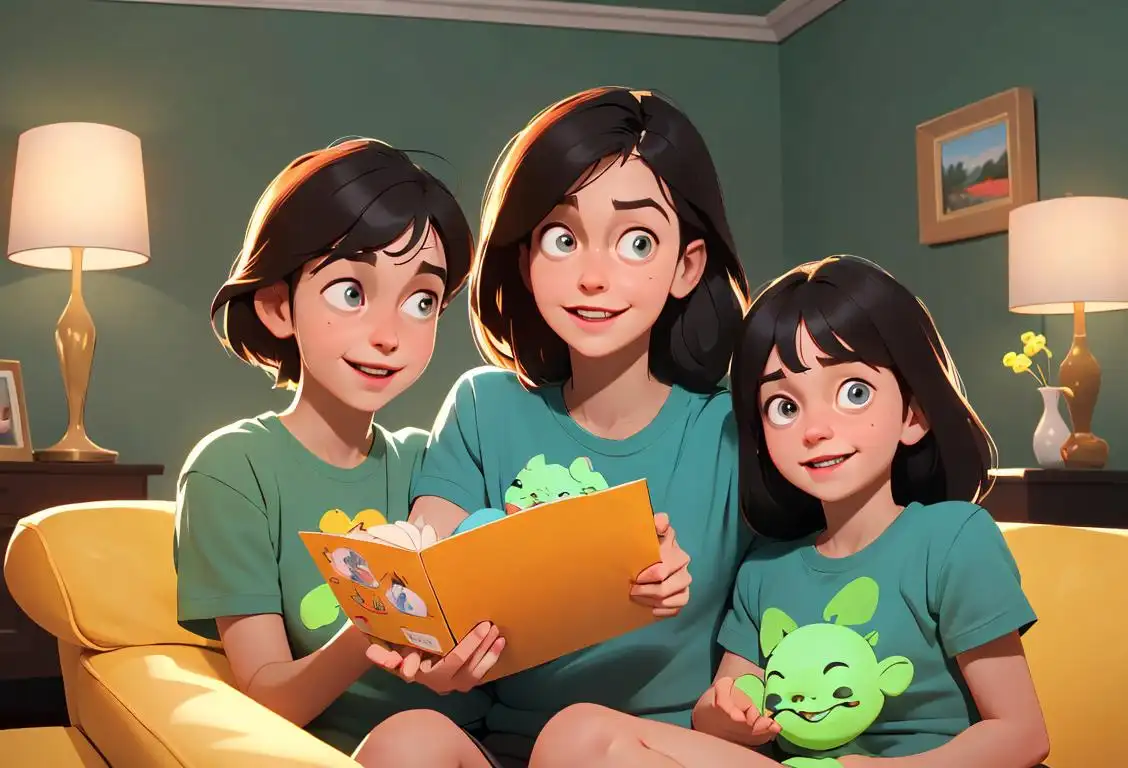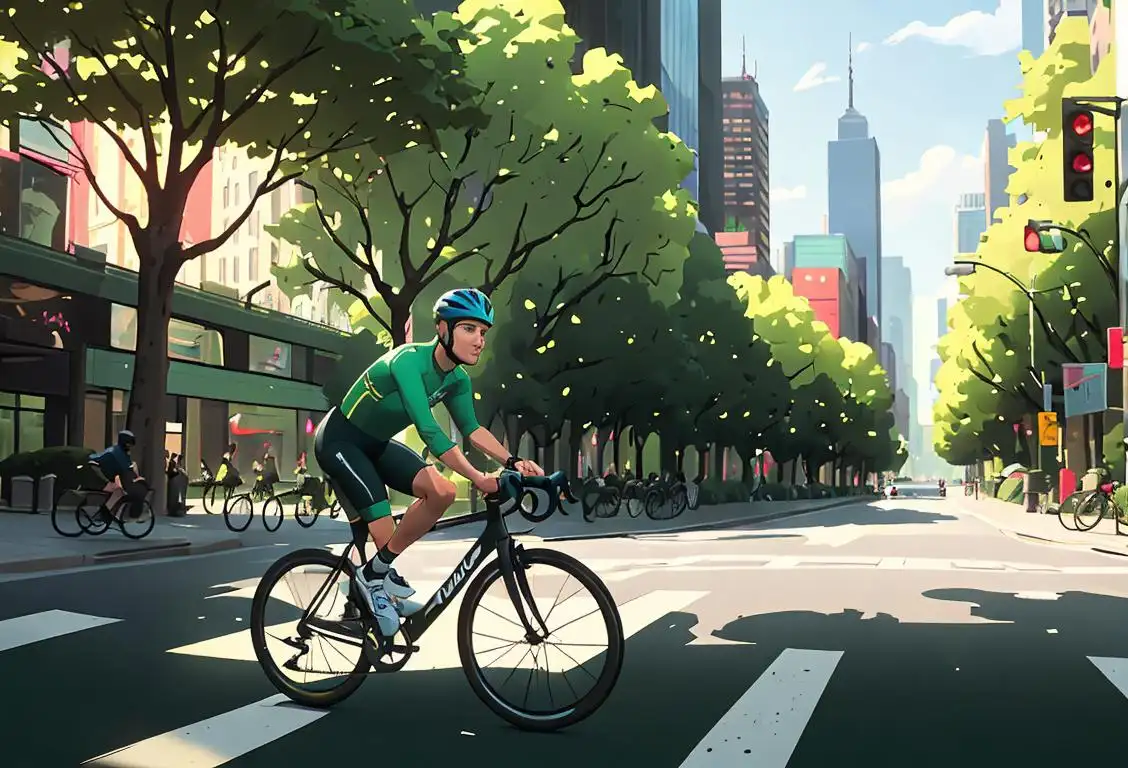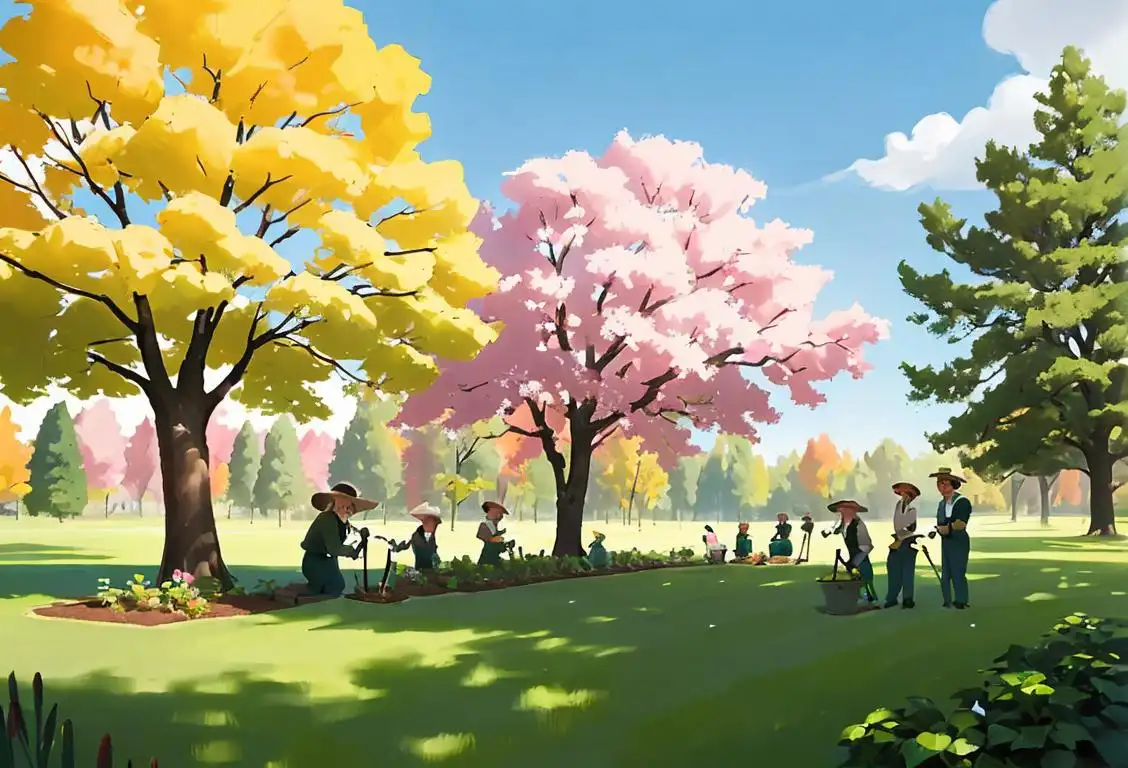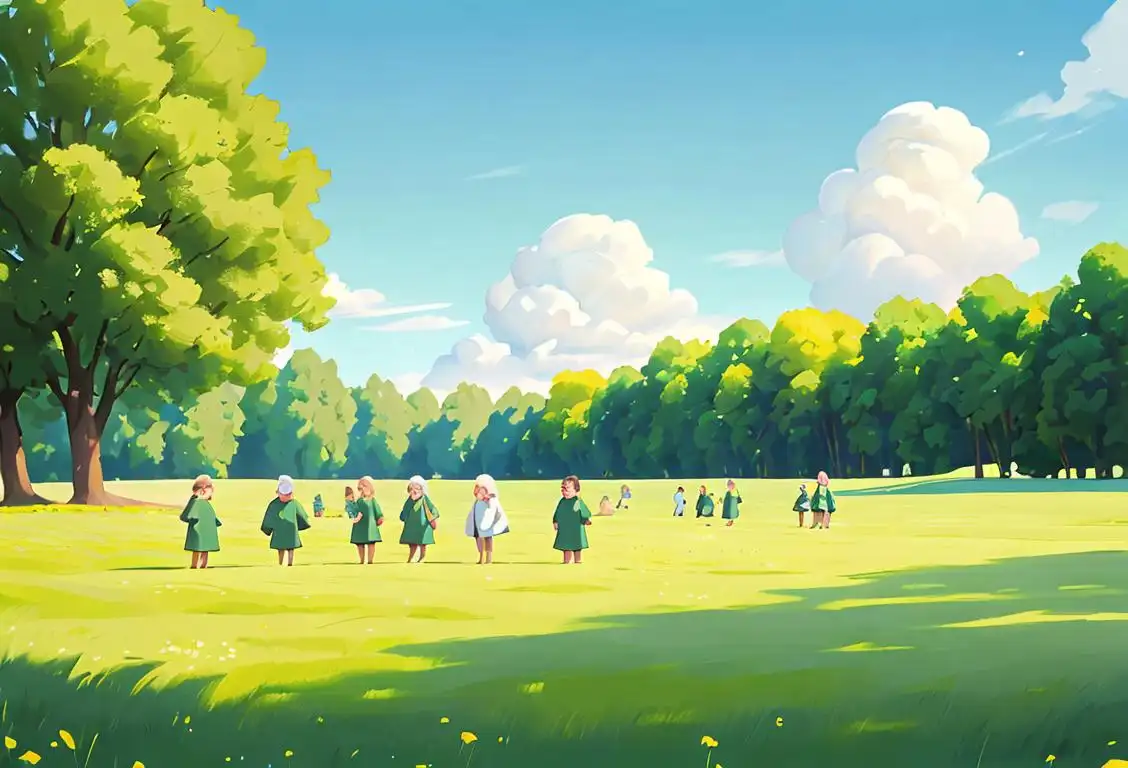National Upcycling Day
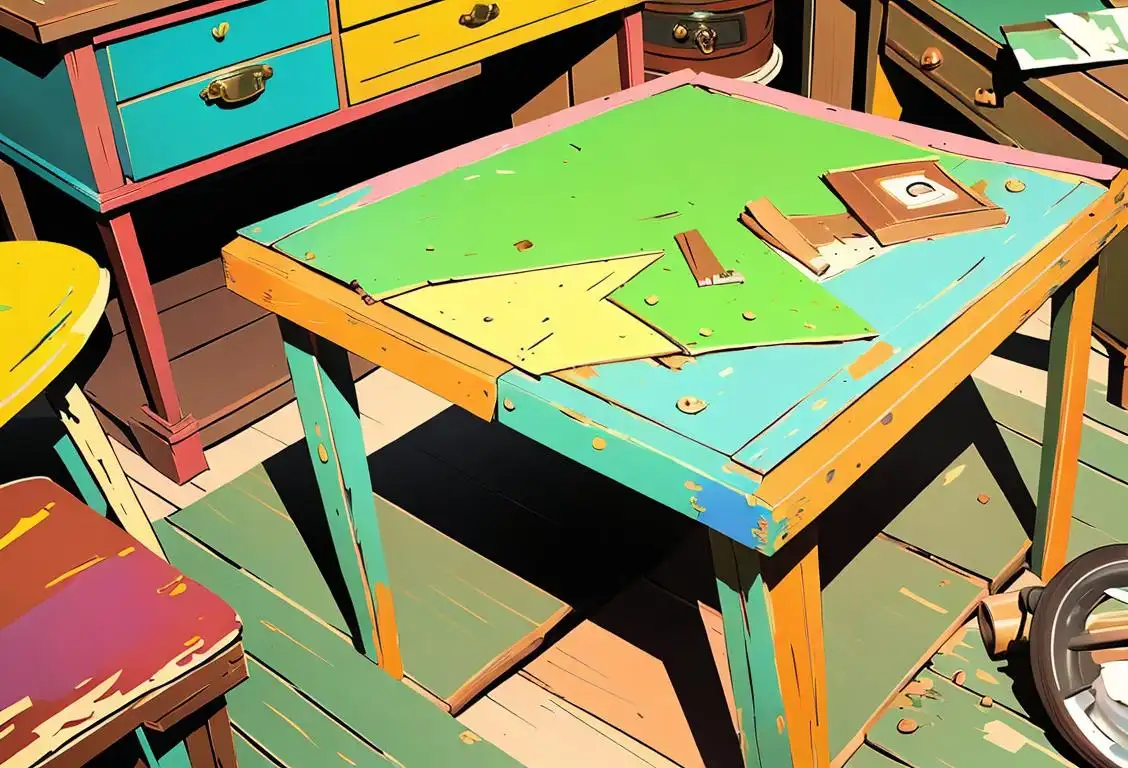
Welcome to the wacky world of National Upcycling Day! Get ready to roll up your sleeves and give new life to old objects. This special day celebrates the art of upcycling - a fun and creative way to turn everyday items into something awesome. So grab your glue gun and let's dive into the wonderful world of upcycling!
When is Upcycling Day?
It's national upcycling day on the 24th June.
A Brief History of National Upcycling Day
Every year on June 24th, people around the world come together to celebrate National Upcycling Day. But what exactly is upcycling? Well, my friend, it's like recycling on steroids. While recycling involves breaking down materials to create something new, upcycling takes it a step further by transforming old and discarded items into unique, one-of-a-kind treasures.
The concept of upcycling has been around for centuries, although it didn't always have a fancy name. In the olden days, folks were masters at repurposing things out of necessity. From patching up clothes to turning scrap metal into tools, people were upcycling before it was cool.
But it wasn't until the rise of the internet that upcycling gained widespread popularity. Websites, blogs, and social media platforms became the breeding grounds for creative minds to share their upcycled projects and inspire others to get their hands dirty.
Why Upcycling Matters
Upcycling is all about reducing waste and being kind to our planet. By repurposing old items, we can decrease the demand for new products and lessen the burden on our landfills. Plus, it's a whole lot of fun!
Not only does upcycling help the environment, but it also sparks creativity and gives us a sense of accomplishment. There's something incredibly satisfying about taking an old, discarded object and turning it into something beautiful and useful. It's like performing a magic trick, but without the top hat and wand.
How to Celebrate National Upcycling Day
Ready to put your upcycling skills to the test? Here are a few ways you can celebrate National Upcycling Day:
- Raid your junk drawer and get creative with DIY projects. Turn old jars into colorful vases, or transform cardboard boxes into funky organizers. The possibilities are endless!
- Visit a thrift store or flea market and hunt for hidden gems. You never know what treasures you'll find that can be upcycled into something amazing.
- Join an upcycling workshop or class. Learn new techniques, meet fellow upcyclers, and leave with a masterpiece!
- Share your upcycling projects on social media using the #UpcyclingDay hashtag. Inspire others and spread the upcycling love.
Did You Know?
The largest upcycled project on record is the ArtPrize 2010 installation called 'The Uncommon Nest.' It was constructed using over 6,000 salvaged materials!
History behind the term 'Upcycling'
2002
Emergence of the term 'upcycling'
The term 'upcycling' was coined in 2002 by the German eco-designer Reiner Pilz. He wanted to describe the process of taking waste materials and transforming them into higher-value products instead of simply recycling them. The concept was first introduced during an interview when Pilz emphasized the importance of creating products that have a longer lifespan and are creatively repurposed.
1994
The Birth of the Term
The term 'upcycling' was coined by German engineer Reiner Pilz in 1994. Pilz used the term during a conference on waste management to describe a process that goes beyond recycling. He explained that while recycling involves converting waste materials into new products, upcycling requires transforming waste materials into products of higher value or quality.
1994
The Origins of Upcycling
The term 'upcycling' was coined in 1994 by Reiner Pilz, a German engineer and ecologist. Pilz used the term to describe the process of reusing materials in a way that adds value, rather than just recycling them. This concept emphasized transforming waste materials into higher-quality products with improved functionalities and aesthetics.
1994
The birth of upcycling
The term 'upcycling' was coined by German engineer Reiner Pilz at a presentation to the Hannover Fair in 1994. Pilz used the term to describe the practice of taking waste materials and transforming them into new products of higher quality and value. This concept aimed to challenge traditional recycling methods by proposing a more sustainable and creative approach.
1930
The birth of upcycling
The term 'upcycling' was first coined in 1930 by Reiner Pilz, a German engineer and architect. Pilz used the term to describe a process of reusing materials in a way that improved their quality or value. This concept of upcycling stood in contrast to traditional recycling, which involved breaking down materials and reusing them in a lesser form.
1994
Emergence of the Term
In 1994, German architect and professor, Reiner Pilz, coined the term 'upcycling' during a presentation in Germany. He used the word to describe the process of transforming waste materials into higher-quality products with greater usability or environmental value. This marked the beginning of a movement that focused on repurposing and reimagining discarded items.
2002
The Popularization of Upcycling
In 2002, William McDonough and Michael Braungart popularized the concept of upcycling in their book 'Cradle to Cradle: Remaking the Way We Make Things.' The book emphasized the importance of designing products with the intention of upcycling or ensuring that they can be transformed into valuable resources at the end of their life cycle.
2005
Recognition by William McDonough and Michael Braungart
In 2005, American architect William McDonough and German chemist Michael Braungart published their influential book 'Cradle to Cradle: Remaking the Way We Make Things.' This book popularized the concept of 'upcycling' as a sustainable approach to design and production. McDonough and Braungart emphasized the importance of designing products with the intention of eventually safely returning them to the biosphere or continuing their use through 'upcycling' processes.
2002
Rapid Spread of the Concept
Around the year 2002, the concept of upcycling gained popularity beyond Germany and began spreading globally. Various artists, designers, and environmental activists embraced the idea and started incorporating it into their work. Upcycling started to be seen as a creative and sustainable solution to address the growing concerns about waste and environmental sustainability.
1994
The rise of eco-consciousness
In the 1990s, there was a growing concern for the environment and a push towards sustainable practices. This led to an increased interest in upcycling as a way to reduce waste and promote creativity. Artists and designers started to explore innovative ways of repurposing discarded materials to create unique and functional items.
2002
Upcycling in Pop Culture
The term 'upcycling' gained popularity in the early 2000s as a result of its mention in popular culture. William McDonough and Michael Braungart's influential book 'Cradle to Cradle: Remaking the Way We Make Things' introduced upcycling as a sustainable design approach. This book further brought the concept to a wider audience and inspired designers, artists, and eco-conscious individuals to embrace the practice of upcycling.
2002
Mainstream popularity
Upcycling started gaining mainstream popularity around 2002 when the book 'Cradle to Cradle: Remaking the Way We Make Things' by William McDonough and Michael Braungart was published. The book explored ecological design principles and promoted upcycling as a way to eliminate the concept of waste. This influential work sparked a global conversation about sustainable production and consumption.
2005
Upcycling as a DIY Trend
Around 2005, upcycling started to emerge as a significant trend in the do-it-yourself (DIY) community. Online platforms and social media played a crucial role in popularizing upcycling projects and showcasing creative ways to repurpose discarded materials. This led to a surge in upcycling enthusiasts who were eager to transform old and unused items into unique and environmentally friendly creations.
2005
Mainstream Recognition
By 2005, upcycling entered the mainstream consciousness, gaining recognition as a viable alternative to traditional recycling. Major brands and retailers began exploring upcycling as a way to reduce their environmental impact and appeal to eco-conscious consumers. Upcycled products started appearing on store shelves, further fueling the popularity of the term.
2005
Upcycling in the Fashion Industry
The fashion industry started embracing upcycling as a sustainable practice in 2005. Designer Orsola de Castro co-founded 'Estethica,' a pioneering initiative by the British Fashion Council that promoted sustainability in fashion. Upcycling became a key component of sustainable fashion, with designers repurposing discarded materials to create unique and environmentally-friendly garments and accessories.
2009
Rise of upcycling culture
Around 2009, 'upcycling' started gaining wider attention and acceptance as a mainstream cultural movement. Influenced by the growing awareness of environmental issues and the desire for unique and personalized goods, individuals began enthusiastically embracing the idea of repurposing discarded materials. DIY upcycling projects, furniture made from reclaimed materials, and fashion created from upcycled textiles became increasingly popular.
2002
Upcycling enters the mainstream
Upcycling gained mainstream attention in 2002 when William McDonough and Michael Braungart published their book 'Cradle to Cradle: Remaking the Way We Make Things.' The book popularized the concept of upcycling and emphasized the importance of designing products with the intention of their eventual reuse or upcycling.
2008
Upcycling in the fashion industry
In 2008, fashion designer and environmental advocate Orsola de Castro founded the international fashion movement 'Estethica' during London Fashion Week. Estethica aimed to showcase sustainable fashion and promote upcycling as a means of reducing waste in the industry. This initiative brought upcycling into the spotlight, inspiring many designers to embrace the concept and incorporate it into their collections.
2010
Upcycling as a DIY Trend
In 2010, upcycling gained significant popularity as a DIY (Do-It-Yourself) trend. Online platforms, such as Pinterest, played a crucial role in sharing upcycling ideas and tutorials with a wide audience. The accessibility of upcycling projects enabled individuals to transform everyday items, such as furniture, clothing, and even household objects, into creative and useful pieces instead of discarding them.
2012
Upcycling as a Lifestyle
In 2012, upcycling became more than just a trend or an occasional activity. It transformed into a lifestyle choice for many individuals seeking to reduce waste and embrace sustainable practices. Upcycling communities and online platforms emerged, fostering a sense of community and providing inspiration and resources for upcyclers worldwide.
2009
Upcycling in Sustainable Fashion
In recent years, upcycling has made significant inroads in the fashion industry. Designers and brands have begun incorporating upcycling techniques into their production processes to reduce waste and promote sustainable fashion. By repurposing materials and garments, upcycling in fashion not only reduces the environmental impact but also results in one-of-a-kind pieces that challenge conventional fashion norms.
2012
Upcycling enters the art world
Upcycling made a significant impact on the art world in 2012 when the Museum of Art and Design in New York City held an exhibition called 'Second Lives: Remixing the Ordinary.' The exhibition featured artworks created from repurposed and upcycled materials, demonstrating the creative potential of waste materials. This event marked a turning point in recognizing upcycling as a legitimate art form and expanded its reach beyond functional products.
2012
Upcycling enters the fashion industry
By 2012, upcycling had expanded into the fashion industry, leading to the emergence of upcycled fashion brands and designers. Upcycled clothing became a way to showcase creativity, uniqueness, and sustainability. Designers and fashion houses began incorporating upcycled materials, such as old denim, leather scraps, and vintage fabrics, into their collections, challenging traditional notions of fashion and promoting eco-consciousness.
2009
Upcycling in fashion
The fashion industry started embracing upcycling as a way to combat its reputation as a major contributor to landfill waste. Designers began incorporating upcycled materials into their collections, giving new life to old garments and textiles. Upcycled fashion gained traction as a sustainable and creative alternative to fast fashion.
2021
Upcycling as a global sustainability movement
Today, upcycling has evolved into a global sustainability movement that spans various industries. It has become a key strategy in reducing waste, conserving resources, and minimizing the environmental impact of production. Many innovative businesses and entrepreneurs now focus on upcycling as a core element of their operations. From repurposing shipping containers into homes to transforming discarded electronics into functional art, upcycling continues to inspire creativity and positive change.
Present
Upcycling as a Global Movement
Today, upcycling continues to gain momentum as a global movement promoting sustainable practices. From upcycled furniture and home decor to artwork and fashion, the concept of upcycling has permeated various industries. It has become a means for individuals to express creativity, reduce waste, and contribute to a more sustainable future. Upcycling has sparked innovation and redefined our perception of waste, emphasizing the potential for discarded objects to be transformed into valuable resources.
Present Day
Continued Growth and Innovation
Upcycling continues to gain momentum and evolve in the present day. It has become an integral part of the circular economy, promoting resourcefulness, creativity, and environmental consciousness. From fashion to furniture, upcycled products are celebrated for their unique designs and positive environmental impact. The term 'upcycling' has firmly established itself in our lexicon, reflecting the growing awareness and commitment to sustainability.
2015
Corporate Involvement in Upcycling
Around 2015, many businesses and corporations started incorporating upcycling practices into their operations as a response to the increasing demand for sustainable solutions. Companies began using upcycling as a way to reduce waste, minimize environmental impact, and enhance their brand image through sustainable innovation. This shift highlighted the growing importance of upcycling in the business world.
2020
Mainstream adoption and awareness
In recent years, upcycling has gained widespread adoption and awareness. As environmental concerns continue to rise, people are becoming more conscious of their consumption habits. Upcycling workshops, DIY tutorials, and online communities have flourished, encouraging individuals to explore their creativity and find new uses for discarded items. With its potential to reduce waste and promote sustainable living, upcycling has become a powerful movement with a significant cultural impact.
2012
Upcycling goes viral
Upcycling captured the public's attention in 2012 when a video titled 'The Story of Stuff' went viral. The video, created by Annie Leonard, highlighted the environmental impacts of consumerism and promoted upcycling as a solution. The video's widespread reach sparked a global interest in upcycling and inspired individuals to find new ways of repurposing household items.
Did you know?
The largest upcycled project on record is the ArtPrize 2010 installation called 'The Uncommon Nest.' It was constructed using over 6,000 salvaged materials!Tagged
awareness fun environmentFirst identified
12th June 2015Most mentioned on
24th June 2015Total mentions
132Other days
Battery Day
Pollution Control Day
Arbor Day
Energy Conservation Day
Penguin Day
Earth Day
Public Lands Day
Bike To Work Day
Tree Planting Day
Clean Air Day
